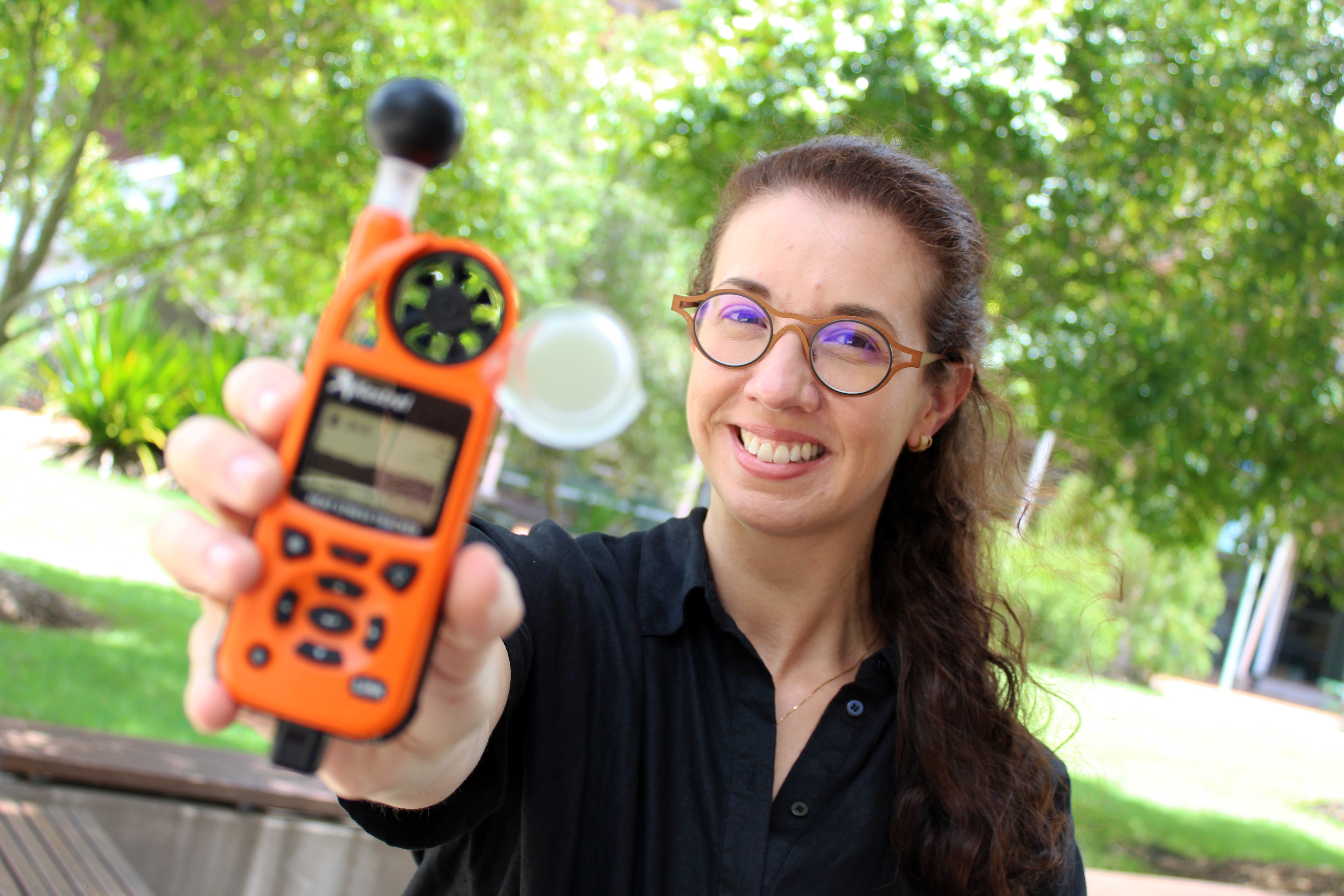A high-tech lab has been established at the University of the Sunshine Coast with the goal of making towns and cities more comfortable and better for our health.
The Bioclimatic and Sociotechnical Cities (BASC) Lab will help USC’s researchers and students take a human-centred approach to enhance urban design and town planning by considering the many factors of the physical environment that impact on people.
The lab is led by Urban Design and Town Planning academics Dr Silvia Tavares and Dr Nicholas Stevens and is part of the university’s School of Law and Society and the Centre for Human Factors and Sociotechnical Systems.
It is equipped with a thermal camera, air quality monitors, sound and light meters, human comfort meters, photo-graphic cameras to assess solar access and radiation, infrared thermometers and a 3D laser scanner. It will soon also have two high-powered computers to simulate complex urban climate conditions.
Dr Tavares said town planning in Australia had previously centred on creating policies without paying enough attention to how towns and cities performed in a technical sense, including climate performance.
“With this equipment we can now provide evidence of best approaches to urban design and planning aimed at achieving optimum outcomes,” she said. “We can measure how the urban environments are currently working.”
Dr Tavares said this included assessing factors such as the orientation of streets, wind direction and airflow among buildings, solar exposure, heat absorption and radiation by different materials and surfaces, light intensity, shade, and sound levels and buffers.
“Because we’ll also have the equipment to perform simulations, we will be able to model, test and recommend alternative urban design and planning strategies to improve urban climate and human comfort,” she said.
“In terms of planning, that’s really important because then we can seek to change policies to enable better out-comes. It’s hard to make that happen unless we can show how it’s going to perform.”
Dr Tavares said this approach would become more important as the Sunshine Coast became more urbanised and its population density increased.
“With our approaches we can also model the complexity of urban settings to better inform design outcomes and assist policy decisions. We can then make sure we are aware of the consequences of different development strategies by testing our options early,” she said.
“Once streets are laid out and buildings are built it becomes much more difficult and at times can be too late to effectively address issues such as high temperatures.”
Dr Tavares said the BASC Lab would be used by academics and post-graduate researchers as well as under-graduate students.
“We want to deliver this very needed climate knowledge to our planning students so, when they graduate, they will know their role in designing cities that respond to pressing urban climate and climate change-related issues,” she said.
Media enquiries: Please contact the Media Team media@usc.edu.au

